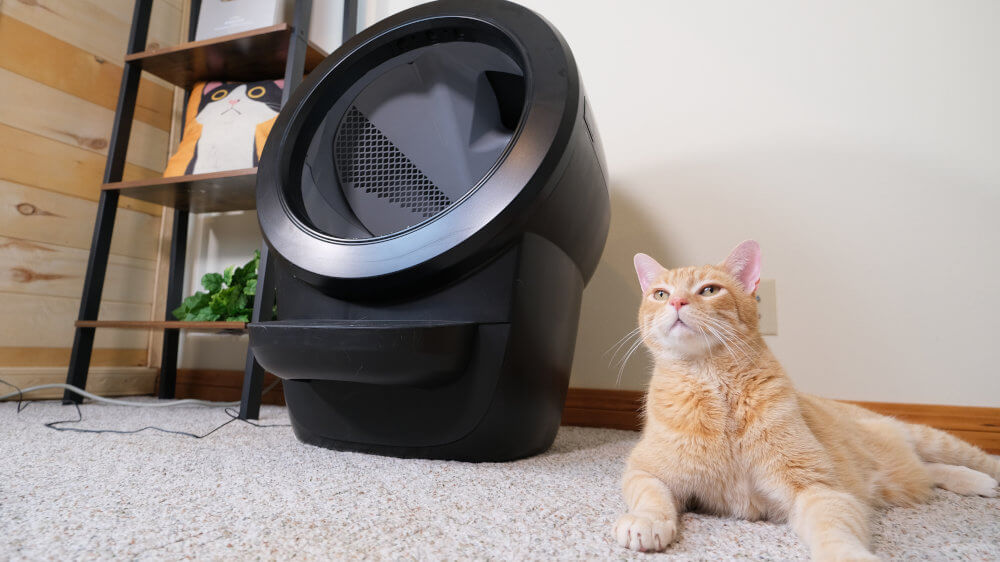
This article is sponsored by Whisker, an international leader in innovative U.S.-made technology for cat owners, including the Litter-Robot. Find out more about their products here.
The Litter-Robot is an automatic self-cleaning litter box that promises to save you from scooping—but how does it work?
Whisker (formerly AutoPets) was founded in 1999 by Brad Baxter, and the launch of the first Litter-Robot soon followed. The latest iteration, the Litter-Robot 4, was released after four years of development and has received recognition as one of TIME’s Best Inventions of 2022.
To date, over one million pet parents have traded in their scoops for this piece of pet tech, but we wanted to know how it actually works. In this article, we’ll explore the basic functionality of the Litter-Robot and dive deep into the engineering and technology that go into its design.
Introduction to the Litter-Robot’s Design
On a high level, the Litter-Robot is a rotating automatic litter box that relies on gravity to separate clumps from clean litter.
The appliance’s patented design features a rotating globe with an integrated sifting mechanism that separates waste from clean litter. After your cat exits the litter box, the cleaning cycle initiates automatically, and the globe begins to rotate.
During each cleaning cycle, litter is filtered through the internal sifting mechanism. Clumps and waste are deposited into a tightly sealed waste compartment, while clean litter is returned to the litter bed for reuse.
But what powers this?
Automatic Cleaning Starts with the OmniSense Detection System
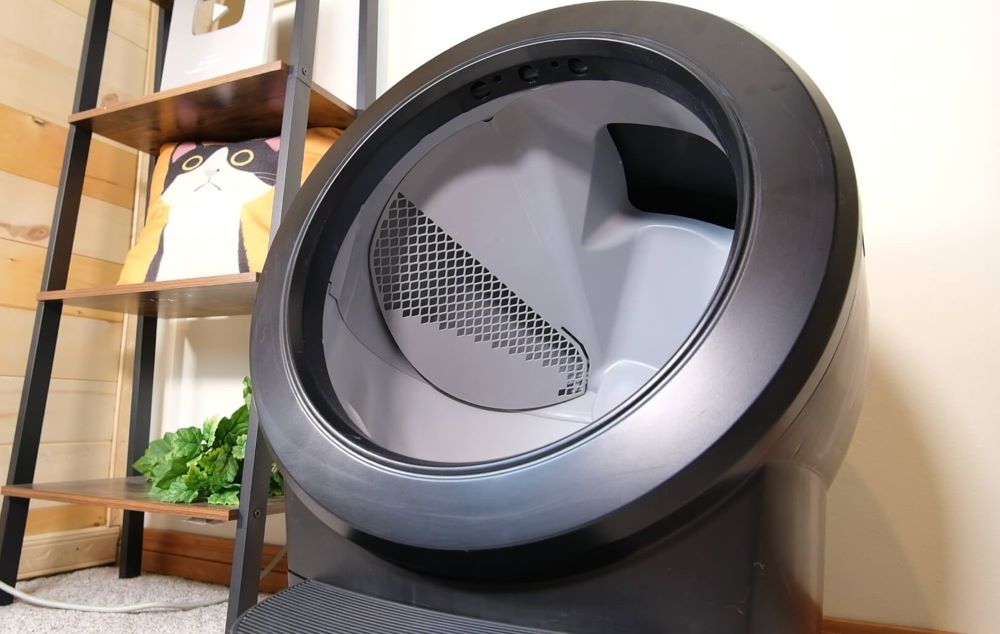
Mallory Crusta / Cats.com. While early models of the Litter-Robot used mechanical sensors alone, the newest one uses a combination of mechanical and laser sensors.
Early models of the Litter-Robot relied on mechanical sensors to detect a cat’s presence in the litter box. Cats weighing five pounds or more activated the weight sensor, starting the timer that controls the cleaning cycle. Instead of mechanical sensors alone, the Litter-Robot 4 relies on a combination of laser and mechanical sensors to detect cats, track usage, and more.
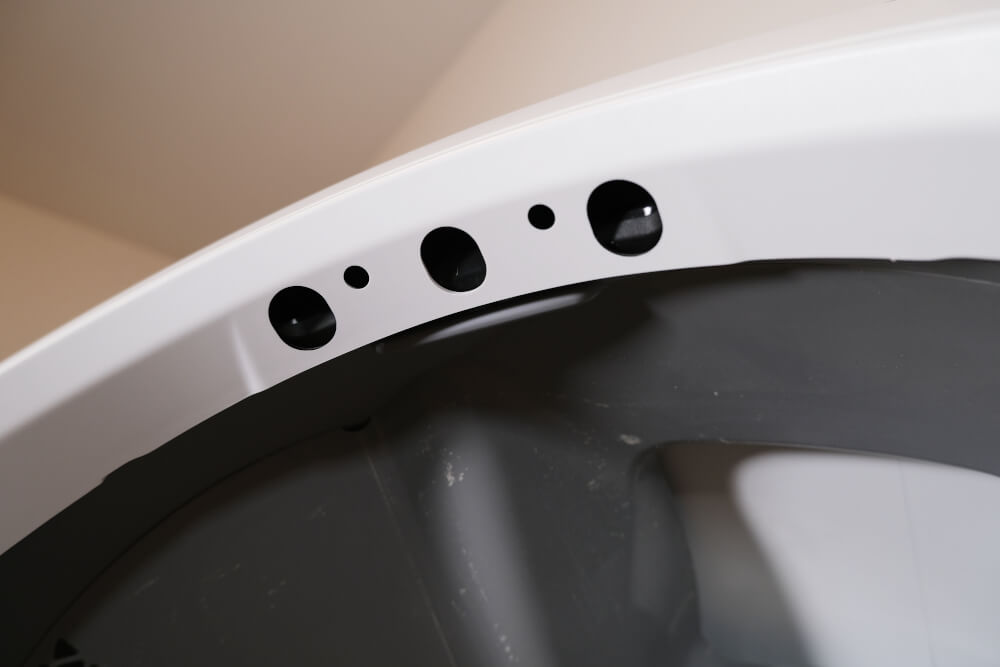
Mallory Crusta / Cats.com. Located on the top rim of the bezel, three sensors look downward into the litter box’s entrance to detect cat activity.
Three laser sensors located inside the top rim of the bezel, called curtain sensors, detect motion. The sensors look downward into the opening, helping to ensure that the cleaning cycle doesn’t start until after the cat has exited. As an additional safeguard, the appliance is equipped with a mechanical pinch detection system.
The OmniSense system helps track litter and waste drawer levels. During each clean cycle, the DFI (drawer full indicator) sensor, positioned on the bezel, measures the level of waste in the drawer as the waste disposal opening in the globe passes over the waste drawer.
When the waste drawer is full, the Litter-Robot sends a notification through the Whisker app and the control panel located on the top right of the bezel blinks blue.
How the Safety System Works
A cat sensor weight scale positioned in the base of the unit is much more sensitive than that of previous models. If any change in weight is detected inside the globe during a cycle, the unit will stop automatically and restart 15 seconds after the cat has exited. Though the automatic cycling feature is only recommended for cats weighing three pounds or more, cats of any age can safely use the Litter-Robot 4.
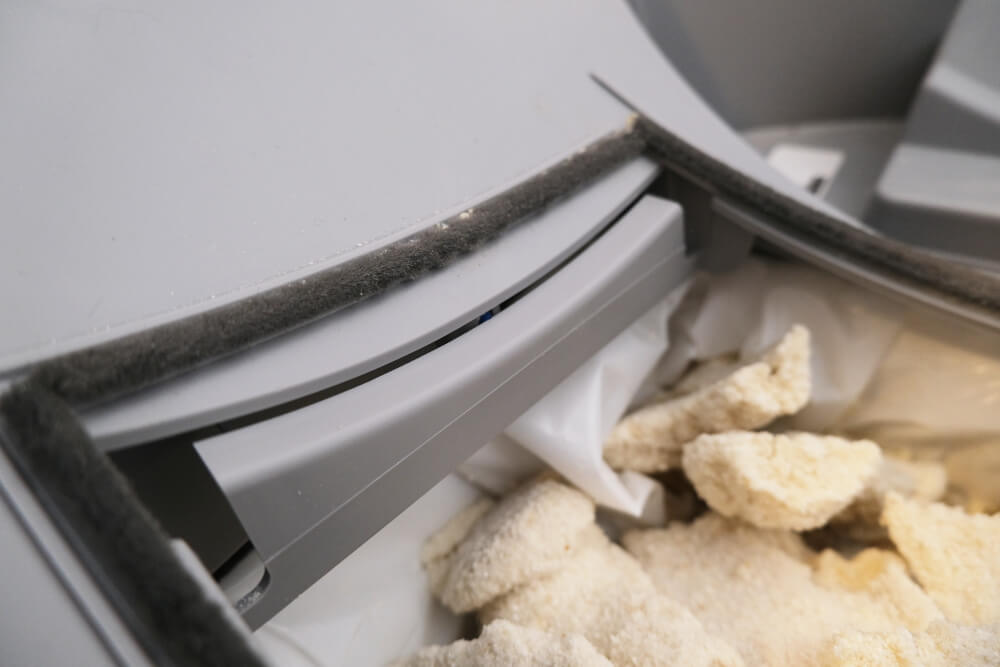
Mallory Crusta / Cats.com. Mechanical pinch sensors ensure that the Litter-Robot will stop operating if a cat manages to get in during a cycle.
Additionally, mechanical pinch sensors sit just above the waste drawer, forcing the Litter-Robot to stop if a cat is detected in the waste chute. This helps to prevent cats from accidentally getting caught in the Litter-Robot as it rotates.
How the Odor Control System Works
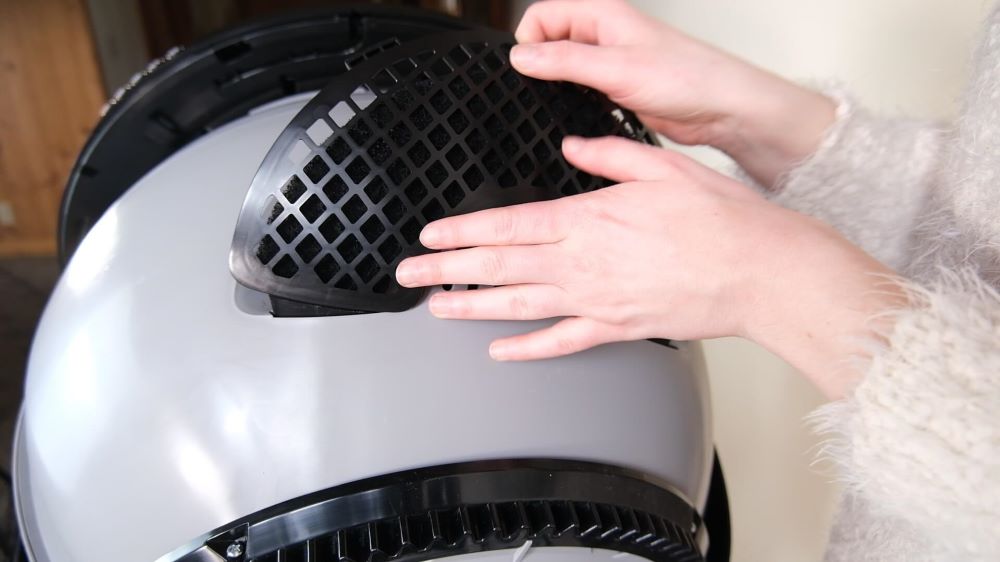
The Litter-Robot globe is designed to work with Whisker’s OdorTrap Packs, which help to control odors.
By separating dirty clumps into the waste compartment, the Litter-Robot helps drastically reduce litter box odor. Early models featured a replaceable carbon filter set in the front of the waste drawer for added odor control, but the most recent model moves the filter to the base of the globe.
The carbon filter sits right above the waste drawer, encased in a plastic cage that can accommodate Whisker’s OdorTrap Packs, if desired. The positioning of the carbon filter combined with a tighter seal on the waste drawer keeps odor trapped.
We tested both the Litter-Robot 3 Connect and the Litter-Robot 4 to assess their performance and effectiveness in odor control. We found that the waste drawer in both models kept odors completely contained — no odor was noticeable until the drawer was opened.
Hard-clumping clay cat litter is key for the Litter-Robot’s self-cleaning performance and optimizing odor control.
Integrated Smart Technology Helps You Track Your Cat’s Litter Box Activity
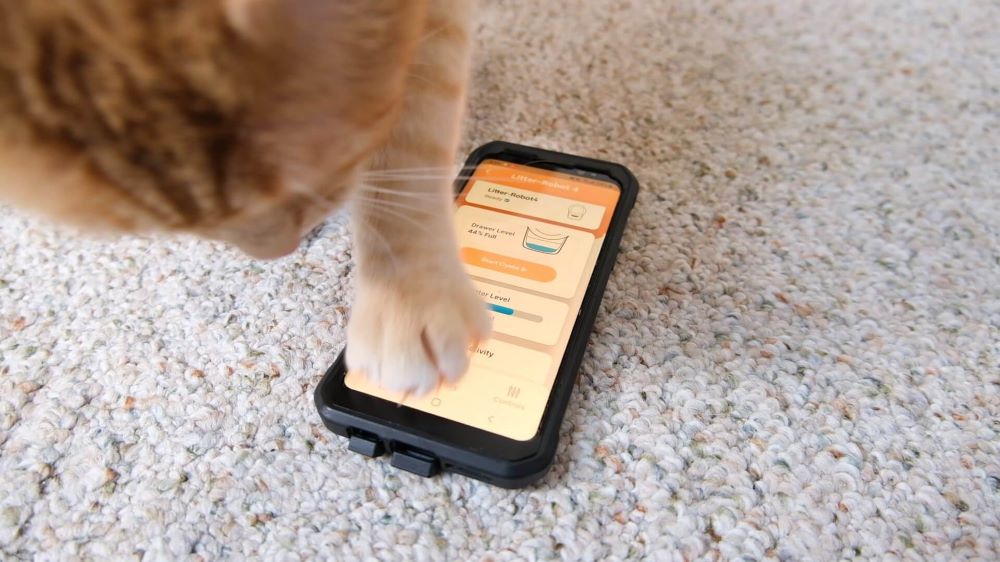
Mallory Crusta / Cats.com. The Litter-Robot 4 works with the Whisker app, feeding you information on your cat’s weight, litter box activity, and more. It also allows you to control the litter box remotely.
The advanced technology that sets the Litter-Robot apart from the competition extends beyond the box itself. The Litter-Robot 3 Connect was the first model to be WiFi-enabled, offering users the ability to monitor and control the appliance remotely via the Whisker mobile app.
The Litter-Robot’s complex network of internal sensors collects information about your cat and their litter box usage, presenting it in easily digestible charts and readouts in the Whisker app.
Litter-Robot 4 takes note of each time your cat uses the litter box, utilizing weight sensors to detect individual cats (that weigh a difference of 1 or more lbs). Additional weight sensors in the waste drawer enable you to track your cat’s usage and easily identify changes in their litter box habits that might indicate a developing health concern.
The Whisker app also makes it easy to adjust the settings on the Litter-Robot 4. Check litter and waste drawer levels at a glance, alter the night light’s brightness level, and change the settings that control the cleaning cycle all from your mobile device.
Thoughtful Engineering Ensures Consistent Performance
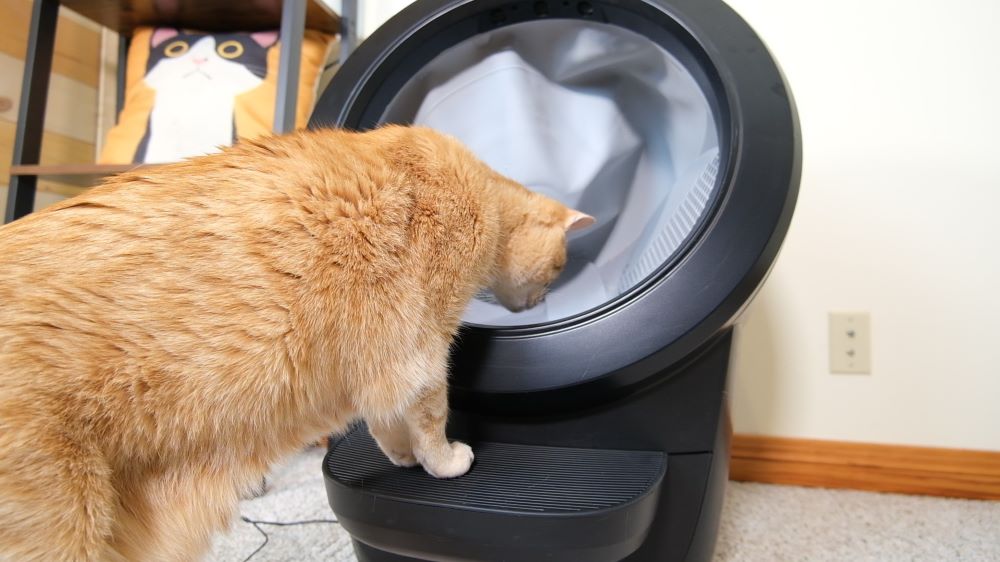
Mallory Crusta / Cats.com. Our favorite thing about the Litter-Robot is the company’s dedication to quality engineering.
While each Litter-Robot model in Whisker’s lineup features the same rotating globe and gravity-driven sifting mechanism, the most recent model represents the culmination of two decades of development, testing, and customer feedback.
Founder Brad Baxter relied on his background as a Big 3 automotive engineer to design and assemble the first Litter-Robot units himself in a rented room in Pontiac, Michigan. A little over two decades later, Litter-Robot is still designed, assembled, and serviced in the USA but has expanded into a 220,000-square-foot factory and warehouse in Wisconsin.
Our Experience with the Litter-Robot
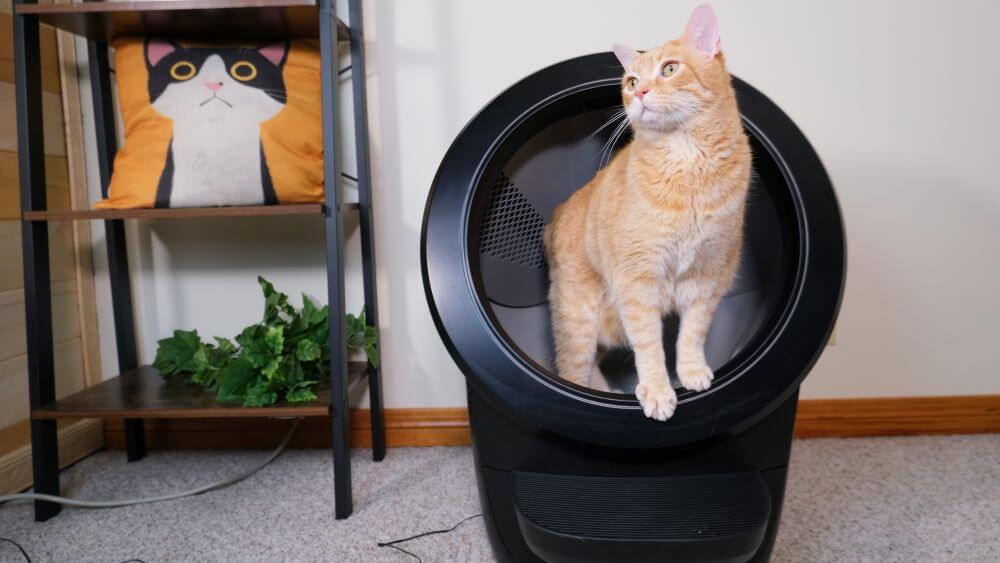
Mallory Crusta / Cats.com. After testing over 20 units, the Litter-Robot 4 is our top-recommended automatic litter box.
Though the Litter-Robot 4 is technologically complex, it requires relatively little setup. The unit is shipped fully assembled and ready for pairing and programming through the Whisker app.
Having tested several Litter-Robot models, we’ve found that fine-tuned adjustments to the Litter-Robot 4’s design help to ensure that it runs smoothly. The cleaning cycle runs promptly and consistently, whether triggered manually or controlled by the timer.
Improving upon the Litter-Robot 3, the Litter-Robot 4 drops waste squarely into the center of the drawer so it fills evenly. This model also runs more quietly than the previous model, with an average noise level of 37 decibels while cycling.
Though the Litter-Robot 4 may not be the perfect fit for every household or budget, its design represents more thoughtful engineering and manufacture than most automatic litter boxes on the market. Whisker continues to make improvements in response to customer feedback.
Check out our in-depth review of the Litter-Robot 4 or browse the product’s features and specifications on the Whisker website.
Ready to try Litter-Robot for yourself? Click here to visit the Litter-Robot site.
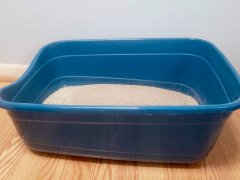
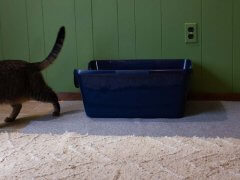
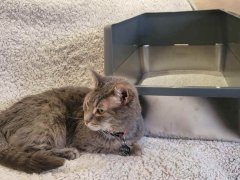
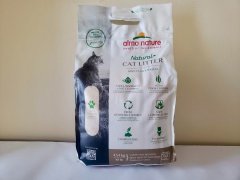




I had to return my Litter Robot back to you guys. I’ll live in a 50+ park and we have no choice on our Wi-Fi. It is 5G, and Litter Robot cannot connect to 5G.. also, Litter Robot does not allow a period in the password. To be technically advanced both of these things need to change. I would buy it back in a day when they change. But will not work for me. I have dish, fiber Wi-Fi, and because of the park I cannot change it.
Hi Judy, we are not sellers of Litter-Robot. I would recommend contacting their customer support directly to get a solution—this sounds like something that should be solvable. https://www.litter-robot.com/support/contact-support
Hope everything works out!